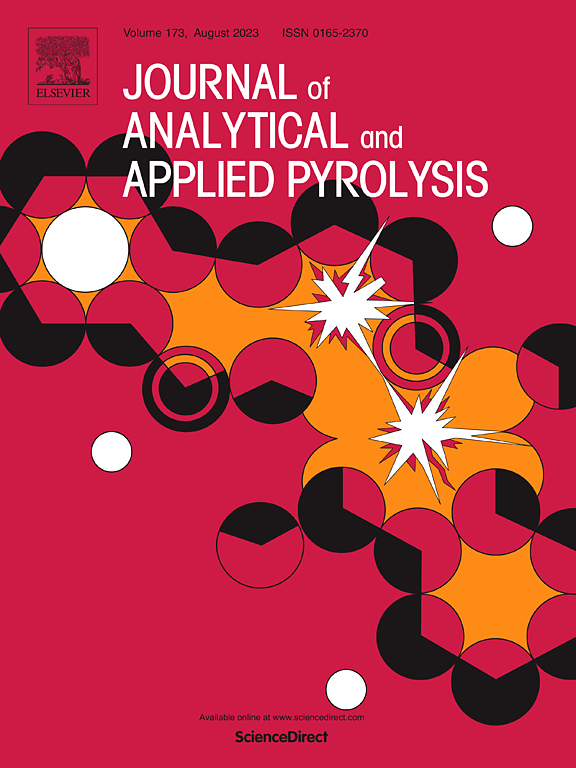Utilizing the self-stabilizing stage of ZIF-8 for highly efficient in situ Cl capture during PVC pyrolysis
IF 5.8
2区 化学
Q1 CHEMISTRY, ANALYTICAL
引用次数: 0
Abstract
This paper explores the application of zeolitic imidazolate framework-8 (ZIF-8) in pyrolytic disposal of poly(vinyl chloride) (PVC), with the goal of assessing the in situ catalytic removal and capture effect of ZIF-8 on Cl, elucidating the migration pattern of Cl, revealing the mechanism of in situ Cl capture by ZIF-8. The results demonstrate that excellent catalytic and Cl trapping properties are exhibited by ZIF-8, and an additional 311.1 mg/g of organic Cl from PVC is facilitated to be removed at 250 ºC. The catalytic effect enhances Cl trapping at low temperatures. The solid-solid reaction between PVC and ZIF-8 during in situ pyrolysis significantly improves Cl capture compared to ex situ pyrolysis. During in situ pyrolysis, ZIF-8 shows excellent Cl capture between 250 and 350 ºC, where Cl is primarily captured in the solid phase as inorganic Cl. ZIF-8 achieves optimal Cl capture at 300 ºC, reaching a peak HCl removal rate of 89.5 %. At this temperature, the content of solid-phase inorganic Cl reaches a maximum of 442.0 mg/g, accounting for 78.7 wt% of the total Cl content. The key to Cl capture lies in the chemical adsorption sites of Zn²⁺ and organic ligands in the ZIF-8 structure, which can react with Cl in both solid-solid and gas-solid reactions. Additionally, crystals formed during pyrolysis create an adsorption barrier, ultimately enabling efficient Cl capture.
求助全文
约1分钟内获得全文
求助全文
来源期刊
CiteScore
9.10
自引率
11.70%
发文量
340
审稿时长
44 days
期刊介绍:
The Journal of Analytical and Applied Pyrolysis (JAAP) is devoted to the publication of papers dealing with innovative applications of pyrolysis processes, the characterization of products related to pyrolysis reactions, and investigations of reaction mechanism. To be considered by JAAP, a manuscript should present significant progress in these topics. The novelty must be satisfactorily argued in the cover letter. A manuscript with a cover letter to the editor not addressing the novelty is likely to be rejected without review.

 求助内容:
求助内容: 应助结果提醒方式:
应助结果提醒方式:


